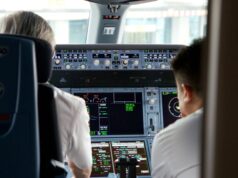As a continuation of last month’s article, let’s dive a bit further into learning styles. An understanding of learning styles, particularly the style which most correlates with your learning, will help you to be more efficient throughout your flight instruction process. When it comes to flight training, we train and learn for the long term. We continue to build on the knowledge we have as we earn each license and rating. Even as we become professional pilots, we continue to build on our knowledge. Understanding how you learn best will help you not only retain information for the long term but will also allow you to absorb information more efficiently.

Learning styles that focus on the sensory receptors – vision, hearing and touch – are called visual, auditory and kinesthetic, respectively. On the most basic level, we utilize all three of these receptors to learn something new. However, each individual tends to rely on one more than the others. Recognizing which receptor dominates results in the most complete learning and understanding of new material which can help you learn more quickly and retain the information for longer periods. Visual learners benefit from looking at information. Graphic materials, such as charts, tables, and videos, result in their most complete understanding. Auditory learners gain knowledge through speaking or listening and respond well to verbal instruction. Kinesthetic learners retain information best through a physical experience and benefit from hands-on learning.
Using the effect of density altitude on aircraft takeoff distance as an example, allows us to analyze how different learners will best retain the material. Visual learners would benefit most from a table that displays the correlation between increasing density altitude and increasing takeoff distance required. An auditory learner would learn best from a lecture-style delivery by someone explaining density altitude’s effect on the required takeoff distance. Lastly, a kinesthetic learner would retain the information best having performed takeoffs at different density altitudes, observing the connections and internalizing the information from that physical activity.
Another style of learning involves a prevalence for an area of the brain that is used to store information. Those who favor the left side tend to be more analytical and verbal, while those who are right-brain dominant are intuitive, creative and spatially oriented. Recognizing which side of the brain is dominant also helps determine how one can best process new information. Those who are left-brain dominant prefer logical steps that build upon prior knowledge when learning something new. Right-brain dominant individuals prefer to take in the big picture first, and then process smaller, more detailed portions of the information.
It’s important to recognize that our learning styles vary with both time and subject matter. While we can define visual, auditory, and kinesthetic learning and separate them into different categories, the reality is that we use all three receptors when learning. The differences in people arise in the preference among the three. Additionally, the receptor that is favored in one area of study may not be the one that is favored in a different area of study. The learning process is complex, and we learn differently based on a number of factors. An understanding of the different styles may allow you to notice patterns in how you learn and provide insight into the ways that learning can be approached.
































































































































